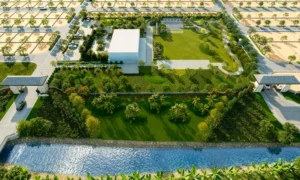Introduction
Bangalore has long been at the forefront of India’s urban transformation, and as we step deeper into the late 2020s, it is clear that the next few years will be pivotal. In this blog, we explore bangalore real estate by 2030 [KW] — what will drive its growth, where value will emerge, what risks lie ahead, and how savvy buyers and investors can position themselves to benefit. We aim to balance data, trends, projections, and practical insight to make this roadmap both engaging and usable.
1. The Macros Shaping Bangalore’s Real Estate Trajectory
1.1 India’s Real Estate Boom toward 2030
India’s real estate sector is projected to surge in value, with many forecasts expecting the industry to reach a trillion-dollar scale by 2030. This expansion is driven by urbanization, rising incomes, policy support, and a shift in how people perceive homes—not merely as shelter but as lifestyle assets.
In this national context, bangalore real estate by 2030 [KW] stands out as a microcosm of opportunity and innovation. The city’s status as a tech and startup hub, combined with its evolving infrastructure, makes it a prime candidate for property value appreciation.
1.2 Demographic & Demand Drivers
- IT & Knowledge Economy: Bangalore continues to attract talent from across India (and even globally). As more professionals seek to settle here, demand for both residential and commercial real estate will intensify.
- Young Families & Aspirational Buyers: Middle-class households, increasingly upwardly mobile, seek modern amenities, good schools, and connectivity, pushing demand in suburban corridors.
- Rental & Co-living Demand: Not everyone buys. Many prefer renting, co-living setups, and flexible leases—especially in areas near employment hubs or transit nodes.bangalore real estate by 2030 .
1.3 Government Policies, Regulations & Reforms
- RERA & Transparency: Regulations like RERA have brought more discipline, accountability, and trust to real estate transactions.
- Smart City Initiatives / Green Norms: Municipal and state policies pushing sustainable development, waste management, energy efficiency, and green certifications will influence how new projects are planned.
- Infrastructure Projects (Metro, Expressways, Ring Roads): Major planned infrastructure will dramatically alter accessibility and thus valuation patterns.bangalore real estate by 2030 .
2. Infrastructure & Connectivity: The Game Changers
2.1 Metro & Mass Transit Expansion
One of the biggest catalysts for property growth will be metro expansion. The Red Line (Hebbal–Sarjapura) is under construction and expected to be operational by 2030. That line will connect northern and southern corridors through the city core, making many suburbs more viable for daily commuting.bangalore real estate by 2030 .
When a new metro station becomes functional, real estate in its 1–3 km radius often sees accelerated appreciation. This means areas that are currently considered “fringe” may become prime.bangalore real estate by 2030 .
2.2 Expressways, Ring Roads & Regional Links
- The planned Bengaluru–Chennai Expressway will improve connectivity between Bengaluru and its neighboring regions.
- Peripheral Ring Road and highway upgrades will reduce bottlenecks in many corridors, pushing the value of lands along these axes.
- Road widening, flyovers, and better last-mile connectivity will matter a lot for demand, not just absolute distance.
2.3 Technology & Smart Infrastructure
Cities of the future need more than roads and rails. IoT, smart grids, automated traffic systems, efficient waste management, water recycling, and integrated city planning will all influence livability—and thereby premium property pricing.bangalore real estate by 2030 .
In short: bangalore real estate by 2030 [KW] will be shaped strongly by how well infrastructure supports lifestyle, not just sheer square footage. bangalore real estate by 2030 .
3. Price Trends & Projections
3.1 Historical Growth & Benchmarking
Between 2020–2025, many parts of Bangalore have seen annual property appreciation rates ranging from 5% to 12%, depending on corridor, quality, and proximity to transit. NBR Group+3Brigade Group+3Housystan+3 Based on this baseline, projections for the next five years remain optimistic.bangalore real estate by 2030 .
3.2 Forecasts for 2030
In multiple area-wise forecasts, prime and emerging sectors are expected to grow significantly by 2030.
- Whitefield: ₹15,500/sq ft (2025) → ~₹21,800 (2030)
- Indiranagar: ₹18,600 → ₹25,900
- Hebbal, Devanahalli, Varthur and banner corridors also expected to see similar trends.bangalore real estate by 2030 .
Depending on location and infrastructure, annualized growth rates of 7–10% are not unlikely. The caveat: those growth rates may compress as you move further from transit nodes.
Thus, bangalore real estate by 2030 [KW] is not just a phrase, but a real expectation for capital appreciation in strategically located properties. bangalore real estate by 2030 .
3.3 Rental Yield & Return on Investment
Rental growth is projected at 8–12% annually in many IT corridors.For 2–3 BHK units in well-connected zones, annual yields of 3–5% are plausible, especially if the property is managed well.
From an investment view: the trick is to buy early, close to transit, and hold for 5–7 years to maximize both capital gains and rental income.bangalore real estate by 2030 .
4. Hot Corridors & Emerging Opportunity Zones
4.1 Established Premium Zones
- Whitefield: Already matured, but still offers pockets of potential, especially where new transit corridors or metro stations may be added.
- Indiranagar, Hebbal: Premium, central locations, with limited land scarcity but high demand.
- Dollars Colony, Koramangala, Malleswaram: These will command premium valuations—less for mass returns, more for safe, prestige investments.
4.2 Growth Corridors with Upside
- Devanahalli / North Bangalore: Proximity to airport and planned infrastructure makes it a strong bet.
- Sarjapur, ORR, Bellandur, Electronic City: With extension of metro lines, these will see spillover demand from IT corridors.
- Varthur, Hennur, Kammanahalli, Yelahanka: As transit improves, these can become prime.
- Fringe Lands Along Ring Roads / Expressways: These might be risky, but early entrants often reap disproportionate returns. bangalore real estate by 2030 .
In sum, bangalore real estate by 2030 [KW] will likely see the best growth in areas that currently straddle the edge of development—if infrastructure catches up.
5. What Buyers & Investors Should Watch Out For
5.1 Risks, Challenges & Mitigations
- Delays & Regulatory Bottlenecks: Even with RERA, bureaucratic hurdles, land disputes, and approval delays persist.
- Over-speculation / Saturation: Some areas may be oversupplied, leading to cooling or flattening of prices.
- Changing Preferences: Buyer taste may shift toward sustainable, smaller, smarter homes over large luxury units.
- Affordability & Interest Rates: Rising interest rates or inflation could dampen demand.
- Infrastructure Execution Risk: Projects may be announced but delayed—buyers investing purely on “promised metro station” should proceed cautiously. bangalore real estate by 2030 .
Mitigation strategies: focus on reputed developers, near confirmed infrastructure projects, and always consider liquidity (how easily you can resell or rent out).
5.2 What Makes a Property Future-Proof
- Close to metro / mass transit
- Good road access & last-mile connectivity
- Balanced mix of amenities (schools, hospitals, retail)
- Sustainable features: green building, energy efficiency, water recycling
- Developer reputation + timely delivery track record
- Flexible design (e.g. spaces that adapt as household needs change)
6. How to Strategize Your Investment / Home Purchase
6.1 For End-Users (Homebuyers)
- Prioritize liveability and convenience over pure capital gain.
- Look for ready-to-move or near-completion projects in good corridors.
- Consider resale value and rental potential in your decision.
- Visit the local neighborhood during different times (morning, night) to assess infrastructure.
- Prefer projects with escrow accounts and transparent accounting.
6.2 For Investors
- Adopt a staggered investment approach (don’t commit all capital at once).
- Mix moderate-risk “near-transit fringe” plays with safer “prime zone” holdings.
- Leverage fractional ownership or co-investment platforms (if available).
- Monitor infrastructure announcements and land-use plans closely.
- Exit strategy is crucial: identify when to hold and when to exit (e.g., after metro opening).
7. Predictions & Scenarios for 2030
Let’s envision two broad scenarios for bangalore real estate by 2030 [KW]:
7.1 Optimistic Scenario
- Metro and expressways fully operational on schedule
- Rising wages, income growth, and job creation fuel housing demand
- Prices in many corridors double from 2025 levels
- Rental yields remain strong due to supply constraints
- Smart homes, sustainability features, and green tech command premium
7.2 Conservative / Pessimistic Scenario
- Infrastructure delays or project cancellations
- Interest rate hikes slowing demand
- Oversupply in peripheral zones leading to price correction
- Regulatory or environmental constraints restricting high-density growth
Your success depends on picking corridors with balance—those with enough promise but not too far ahead of their infrastructure.bangalore real estate by 2030 .
8. Concluding Thoughts
As we look ahead, bangalore real estate by 2030 [KW] is more than speculation—it’s a roadmap composed of tangible forces: infrastructure, demand, policy, and execution. For those willing to do the homework, the next 5–7 years could be transformative.
Whether you’re buying your dream home or investing for capital appreciation, the guiding principle should be: buy close to confirmed infrastructure, trust credible developers, and be patient.
EXPLORE MORE LUXURY PROPERTIES IN BANGALORE




